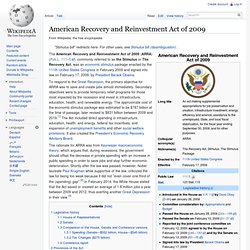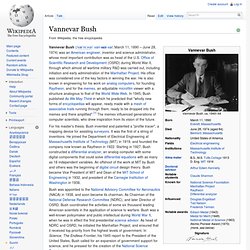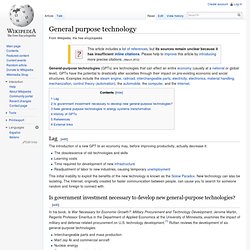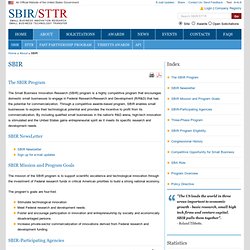

Brainstorming Doesn’t Really Work. In the late nineteen-forties, Alex Osborn, a partner in the advertising agency B.B.D.O., decided to write a book in which he shared his creative secrets. At the time, B.B.D.O. was widely regarded as the most innovative firm on Madison Avenue. Born in 1888, Osborn had spent much of his career in Buffalo, where he started out working in newspapers, and his life at B.B.D.O. began when he teamed up with another young adman he’d met volunteering for the United War Work Campaign.
By the forties, he was one of the industry’s grand old men, ready to pass on the lessons he’d learned. His book “Your Creative Power” was published in 1948. An amalgam of pop science and business anecdote, it became a surprise best-seller. “Your Creative Power” was filled with tricks and strategies, such as always carrying a notebook, to be ready when inspiration struck. American Recovery and Reinvestment Act of 2009. The American Recovery and Reinvestment Act of 2009 (ARRA) (Pub.L. 111–5), commonly referred to as the Stimulus or The Recovery Act, was an economic stimulus package enacted by the 111th United States Congress in February 2009 and signed into law on February 17, 2009, by President Barack Obama.

To respond to the Great Recession, the primary objective for ARRA was to save and create jobs almost immediately. Secondary objectives were to provide temporary relief programs for those most impacted by the recession and invest in infrastructure, education, health, and renewable energy. The approximate cost of the economic stimulus package was estimated to be $787 billion at the time of passage, later revised to $831 billion between 2009 and 2019.[1] The Act included direct spending in infrastructure, education, health, and energy, federal tax incentives, and expansion of unemployment benefits and other social welfare provisions.
NNI (National Nanotechnology Initiative) Sciense and tech concepts. What are scale correlations? DARPA. DARPA's former headquarters in the Virginia Square neighborhood of Arlington.

This agency recently moved to 675 North Randolph Street, near the Ballston Common Mall. DARPA began as the Advanced Research Projects Agency (ARPA) created in 1958 by President Dwight D. Eisenhower for the purpose of forming and executing research and development projects to expand the frontiers of technology and science and able to reach far beyond immediate military requirements.[3] The administration was responding to the Soviet launching of Sputnik 1 in 1957, and ARPA's mission was to ensure U.S. military technology be more sophisticated than that of the nation's potential enemies.
From DARPA's own introduction:[4] DARPA’s original mission, established in 1958, was to prevent technological surprise like the launch of Sputnik, which signaled that the Soviets had beaten the U.S. into space. History[edit] DARPA achievements for the past 50 years Early history[edit] Later history[edit] Recent history[edit] Vannevar Bush. Vannevar Bush (/væˈniːvɑr/ van-NEE-var; March 11, 1890 – June 28, 1974) was an American engineer, inventor and science administrator, whose most important contribution was as head of the U.S.

Office of Scientific Research and Development (OSRD) during World War II, through which almost all wartime military R&D was carried out, including initiation and early administration of the Manhattan Project. His office was considered one of the key factors in winning the war. He is also known in engineering for his work on analog computers, for founding Raytheon, and for the memex, an adjustable microfilm viewer with a structure analogous to that of the World Wide Web. For his master's thesis, Bush invented and patented a "profile tracer", a mapping device for assisting surveyors. General purpose technology. General-purpose technologies (GPTs) are technologies that can affect an entire economy (usually at a national or global level).

GPTs have the potential to drastically alter societies through their impact on pre-existing economic and social structures. Endogenous growth theory. Models in Endogenous Growth[edit] In the mid-1980s, a group of growth theorists became increasingly dissatisfied with common accounts of exogenous factors determining long-run growth.

They favored a model that replaced the exogenous growth variable (unexplained technical progress) with a model in which the key determinants of growth were explicit in the model. The initial research was based on the work of Kenneth Arrow (1962), Hirofumi Uzawa (1965), and Miguel Sidrauski (1967).[2] Paul Romer (1986), Robert Lucas (1988),[3] and Sergio Rebelo (1991)[4][5] omitted technological change.
Instead, growth in these models was due to indefinite investment in human capital which had spillover effect on economy and reduces the diminishing return to capital accumulation.[6] The AK model, which is the simplest endogenous model, gives a constant-saving-rate of endogenous growth. An evolutionary theory of economic change - Richard R. Nelson, Sidney G. Winter. Mazzucato The Entrepeneurial State. Small Business Innovation Research (Federal Gov.)
The SBIR Program The Small Business Innovation Research (SBIR) program is a highly competitive program that encourages domestic small businesses to engage in Federal Research/Research and Development (R/R&D) that has the potential for commercialization.

Through a competitive awards-based program, SBIR enables small businesses to explore their technological potential and provides the incentive to profit from its commercialization. By including qualified small businesses in the nation's R&D arena, high-tech innovation is stimulated and the United States gains entrepreneurial spirit as it meets its specific research and development needs. SBIR NewsLetter SBIR Mission and Program Goals.